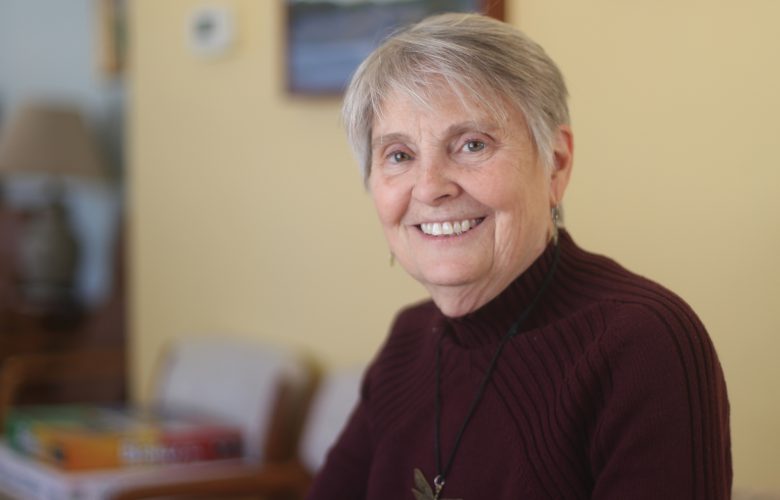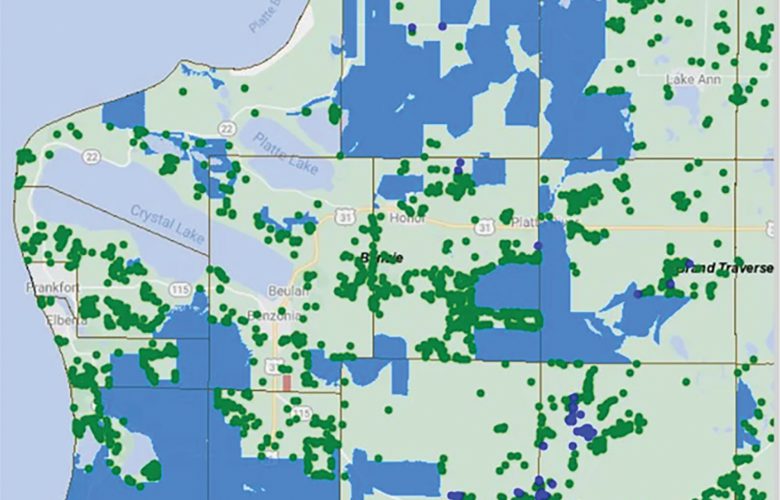Designing towns for people, arts, and culture
By Sarah Bearup-Neal
Current Contributor
When the conversation turns to how the arts are represented in a community, one might point to a museum within the city’s limits or to a restored movie theater where art house films are screened alongside blockbusters. Those are outward, brick-and-mortar symbols of a community’s cultural life. But what, then, are the less visible characteristics of a community in which the arts are an integral part?
The answer lies at the heart of creative placemaking.
“In creative placemaking, public, private, not-for-profit, and community sectors partner to strategically shape the physical and social character of a neighborhood, town, tribe, city, or region around arts and cultural activities,” wrote Jason Schupbach of the National Endowment for the Arts (NEA) in a 2012 NEA News interview with Ann Markusen and Anne Gadwa, authors of the NEA white paper ‘Creative Placemaking.’
Placemaking is a concept that surfaced in the 1960s. At the heart of placemaking is the belief that cities should be designed for people, not just cars and shopping malls, according to the Project for Public Spaces, a New York City nonprofit. Creative placemaking further refines the idea. Creative placemaking is not so much about transplanting more artists and creative people into a community’s soil. Rather, it is about how the arts, artmakers, and creative thinkers are integrated into the fiber of a community, at many different levels, and the benefits that accrue.
EACC Helps Out
“I think that when artists get involved in the community, in different roles—and these roles may not be just about artmaking—they bring their creativity, their vision, and their ability to see from a different perspective” says Empire resident Julie Avery.
Avery moved to Empire in 2012 after retiring from a 20-year career at the Michigan State University Museum. The focus of her professional work was on rural life and culture, out of which was created the Port Oneida Fair, an annual Leelanau County event.
Bringing right-brained thinkers to left-brain-run enterprises and projects—from planning commissions to boards of directors to the local hardware store—has the capacity to take local problem solving and community building in another direction, Avery says, adding, “There is this Empire community cultural group…” Avery is referring to the Empire Area Community Center (EACC), a nonprofit whose mission is to enrich lives through “one-time events and ongoing activities.”
The EACC jumped into the goodwill business in 2012, when it teamed up with Empire musician Chris Skellenger to create a series of free monthly concerts. Skellenger approached the EACC after he had seen yet another donation jar sitting on the end of a Deering’s Market checkout counter. The sign affixed to the jar asked for help in paying a local resident’s medical bills. Skellenger thought there was a better, more dignified way to help people in his community, and he asked music to do the work.
Musicians living in the region perform at local venues—from the Empire Town Hall to the Llama Meadows Farm in Benzonia. Donations from each concert are administered by the EACC and directed to area residents who are in need. “In need [means a one-time gift to help] someone who has nowhere else to go,” says EACC president Linda Payment. Fund recipients are nominated; they and their families remain anonymous.
To date, the EACC has distributed $47,087.74 to 81 people over four years. Creative thinking and the arts made it happen.
“People will gather together to listen to music and will contribute to a cause. It becomes an event, and the power of music is at the heart of it,” Payment says.
Summer Singers
While still at MSU, Avery helped start the Rural Arts and Culture program with the Council for Arts and Cultural Affairs.
“We looked at communities and helped them to understand that we weren’t going to give them money to bring in the Detroit Symphony,” Avery says. “We were going to give them money to look at the musicians they had in their community and bring them together to perform for their community.”
This program’s spirit and intent is manifested by the Summer Singers, a project of the Glen Arbor Art Association.
For the past 14 summers, the Singers have welcomed anyone, regardless of musical talent, who wants to sing in the choir. The group’s repertoire is “upbeat, a mix of Americana and other things,” says Summer Singer board member Cindy Graves of Glen Arbor. Weekly rehearsals are held at the Glen Lake Community Reformed Church. This summer, the Singers will perform at the Old Settlers’ farewell-to-summer concert on August 16 at 7 p.m. at the church.
“Every community in the world has some sort of musical connection you can hook into, whether it’s an orchestra or a band. People who love music will seek that out. It gives you a sense of community. When I moved up here, I didn’t know anybody. I just came up here with my dog, and I was immediately embraced into the group,” Graves says.
Individual Artists
The arts can create a place in the community for new arrivals; but the arts also create a sense of place. Think Santa Fe and galleries—they are inseparable ideas.
“Yet, there needs to be a top-to-bottom effort, one that involves citizens at all levels of the community or region, to [cement the idea] that artists and creative [people] are good for ‘our town,’” Avery wrote in a recent email. “That artists and creative [people] are good for attracting other businesses, experiences, neighboring citizens to come and shop here.”
The Leelanau Peninsula Chamber of Commerce felt unequivocally that art works to drive business in the county. As a testament to that belief, the Leelanau Chamber named Suttons Bay landscape photographer Ken Scott its Outstanding Business of 2015. Since 1985, Scott has carved his own niche with indelible images of the area’s notable natural landmarks, as well as off-the-beaten-path places. For more than a decade, these photographs have anchored the back page of The Leelanau Enterprise’s first section and have been the images around which four books have been built. According to the Chamber, Scott’s pictures bring people to the peninsula, and business follows—which brings us back to Empire and onto asparagus.
Ode to Asparagus
Other festivals celebrating agricultural harvests have nothing on the Empire Asparagus Festival, a true and compatible marriage of art and business. Having just completed its 13th year, the Empire festival takes place at the height of the asparagus harvest in late May. The fete was conceived as a Chamber of Commerce event to bring visitors to the village during a slower (tourist) time of year. This revenue-producing project began, however, with a budget of about zero dollars, “so whatever we did had to be self-funding or not cost anything to put on,” says Paul Skinner, chairperson of the Empire Chamber. Creative thinking on this problem yielded solutions that have become the festival’s signature events—the annual Asparagus Parade and the poetry contest.
The parade cost nothing to put on, or to participate in, Skinner says. Word went out, and people showed up with their asparagus-themed bicycles, floats, and cars. Year after year, it became an exercise in street theater, full of walking and skateboarding asparagus and other costumed tributes to the perennial vegetable. Also this year, 14 people wrote odes to the mighty spear, and 50 people attended the annual reading of those odes at the Glen Lake Community Library, according to David Diller, head librarian.
The Asparagus Festival is a bona fide hit, by all measures, Skinner says. Although it was spawned by a business need, the festival’s creative aspects never felt like a fundraising Trojan horse. In this case, the Empire Chamber thought creatively about how to celebrate a quirky, local food and found that “the art component enriched the actual festival experience—vs. having a festival full of cotton candy and Ferris wheels,” Skinner says. “I’ve had vendors call and say, ‘I can bring you 50 feet of sunglasses.’ But we weren’t about just having vendors selling sunglasses; we wanted the festival to be a celebration of asparagus, grown and created locally. Fifty feet of sunglasses just didn’t go at all.”
There are many ways to create a place. One approach, in the spirit of “50 feet of sunglasses,” is the big-box store. In December, a 9,100-square-foot dollar store was proposed to the Empire Village Planning Commission, which unanimously said “No thanks” to the idea by denying a request to rezone a residential parcel that was being eyed for the business. Commissioners and community residents said a big-box store was not the right fit for the community.
Another way to create a place identity is through creativity, locally based and sourced. According to the Project for Public Spaces, “Since creativity fuels place value, the benefits of using arts and culture to tap into a place’s unique character extend well beyond the art world”—sometimes to the main streets leading into the Village of Empire, where 18,000 daffodil bulbs bloom each spring and asparagus spears walk by.
Featured image: Julie Avery is an Empire resident who helped create a feeling of “place.” Photo courtesy of Gary Howe.




